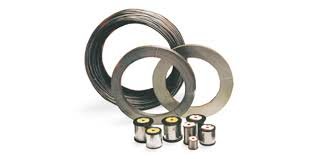Essential Guide to an Oil Extraction Plant

An oil extraction plant is an industrial facility where oils are extracted from various raw materials such as seeds, nuts, and fruits. These plants play a crucial role in the food, pharmaceutical, and cosmetic industries by providing high-quality edible and industrial oils. The extraction process can involve mechanical pressing, solvent extraction, or a combination of both to ensure maximum oil yield and purity.
This article explores the working mechanism, types of oil extraction methods, applications, benefits, and challenges of an oil extraction plant.
What is an Oil Extraction Plant?
An oil extraction plant is a facility where raw materials like soybeans, sunflower seeds, palm fruits, and coconuts are processed to extract oil. The extracted oil is further refined to remove impurities, making it suitable for consumption or industrial applications.
Oil extraction is vital for producing cooking oils, biodiesel, lubricants, cosmetics, and medicinal products. The efficiency of an extraction plant depends on the method used, the quality of raw materials, and processing technology.
How Does an Oil Extraction Plant Work?
An oil extraction plant operates through several stages to ensure efficient oil recovery. The steps involved in oil extraction include:
1. Raw Material Preparation
Before extraction, the raw materials undergo pre-processing steps, which may include:
- Cleaning: Removing dirt, stones, and other foreign particles.
- Dehulling: Removing outer shells of seeds like soybeans and sunflower.
- Grinding or Flaking: Breaking down seeds into smaller pieces to increase surface area for oil extraction.
- Cooking or Roasting: Heating materials to enhance oil yield and improve extraction efficiency.
2. Oil Extraction Process
There are two main methods of oil extraction used in modern plants:
A. Mechanical Pressing (Cold Pressing and Expeller Pressing)
- Involves squeezing oil out of seeds using high pressure.
- Cold pressing maintains oil purity and nutritional value by avoiding high temperatures.
- Expeller pressing applies moderate heat and pressure to extract more oil.
- Common in small-scale and organic oil production.
B. Solvent Extraction Method
- Uses a chemical solvent (usually hexane) to dissolve and extract oil from raw materials.
- The oil-solvent mixture is separated, and the solvent is evaporated and recovered.
- Used in large-scale industrial oil extraction due to high efficiency.
3. Oil Refining and Purification
After extraction, crude oil undergoes refining to remove impurities. The process includes:
- Degumming: Removing phospholipids and other impurities.
- Neutralization: Eliminating free fatty acids that can cause rancidity.
- Bleaching: Removing pigments and unwanted color.
- Deodorization: Using steam to eliminate unpleasant odors.
4. Packaging and Storage
Once purified, the extracted oil is packaged in bottles, drums, or bulk containers and stored under controlled conditions to prevent oxidation and spoilage.
Types of Oils Extracted in an Oil Extraction Plant
Different plants extract various types of oils, each with unique properties and applications. Some of the most commonly extracted oils include:
1. Edible Oils
- Soybean Oil: Widely used for cooking, frying, and processed foods.
- Sunflower Oil: Popular for its light flavor and high smoke point.
- Palm Oil: Used in food processing, snacks, and bakery products.
- Coconut Oil: Known for its health benefits and culinary applications.
- Olive Oil: A staple in Mediterranean cuisine with numerous health benefits.
2. Essential Oils
- Lavender Oil: Used in aromatherapy and skincare.
- Peppermint Oil: Common in cosmetics, medicines, and food flavoring.
- Tea Tree Oil: Recognized for its antibacterial and antifungal properties.
3. Industrial Oils
- Castor Oil: Used in lubricants, pharmaceuticals, and cosmetics.
- Neem Oil: Acts as a natural pesticide and medicinal ingredient.
- Jatropha Oil: Utilized in biofuel production.
Applications of Oil Extraction Plants
Oil extraction plants cater to various industries by supplying essential oils for multiple applications:
1. Food Industry
- Used in cooking, frying, and food preservation.
- Found in margarine, salad dressings, and processed snacks.
2. Cosmetic and Skincare Industry
- Essential oils are used in beauty products, lotions, and soaps.
- Coconut and argan oils serve as natural moisturizers.
3. Pharmaceutical Industry
- Medicinal oils like castor and eucalyptus oil are used in drugs and ointments.
4. Biofuel Production
- Some plant-based oils (e.g., palm and jatropha oil) are converted into biodiesel as an alternative to fossil fuels.
5. Industrial Applications
- Oils are used in lubricants, paints, and detergents.
- Castor oil is a base for synthetic resins and coatings.
Benefits of an Oil Extraction Plant
1. High Yield and Efficiency
Modern oil extraction plants maximize oil recovery, ensuring minimal waste of raw materials.
Read also: Essentials of a Business Analyst portfolio
2. Cost-Effective Production
Automated machinery reduces labor costs and improves processing speed, making oil production more economical.
3. Versatile Applications
The oils extracted serve multiple industries, from food processing to pharmaceuticals and biofuels.
4. Sustainable and Eco-Friendly
Many oil extraction plants adopt eco-friendly practices, such as solvent recycling and waste utilization for animal feed or biofuel production.
5. Longer Shelf Life of Oils
Refined and purified oils have a longer shelf life, making them suitable for global export and large-scale consumption.
Challenges in Oil Extraction
1. High Initial Investment
Setting up an oil extraction plant requires significant capital for equipment, storage, and refining units.
2. Solvent Handling Risks
Solvent-based extraction methods involve chemical handling, posing fire hazards and environmental concerns.
3. Regulatory Compliance
Oil processing industries must adhere to strict food safety and environmental regulations to ensure consumer safety.
4. Fluctuations in Raw Material Supply
The availability and cost of oilseeds and raw materials depend on seasonal factors, which can impact production efficiency.
5. Energy Consumption
Oil extraction plants require high energy inputs for heating, solvent recovery, and refining processes.
Future Trends in Oil Extraction
With evolving technology and increasing demand for sustainable oil production, future developments in oil extraction plants include:
1. Adoption of Green Solvents
Bio-based and water-based solvents are being developed to reduce environmental impact.
2. Supercritical Fluid Extraction
CO₂-based extraction methods provide a safer, chemical-free alternative for extracting high-quality oils.
3. Automation and AI Integration
Advanced automation in oil extraction plants helps monitor efficiency, reduce energy consumption, and optimize processing.
4. Waste Utilization
Innovative techniques convert oil extraction byproducts into biofuels, animal feed, or organic fertilizers.
5. Expansion into Specialty Oils
There is a growing interest in niche oils like avocado oil, hemp seed oil, and camelina oil due to their health benefits.
Conclusion
An oil extraction plant plays a fundamental role in producing edible, industrial, and medicinal oils. Using advanced extraction techniques such as mechanical pressing and solvent extraction, these plants ensure maximum oil yield and purity. While there are challenges such as high investment costs and regulatory requirements, technological advancements and sustainable practices are making oil extraction more efficient and environmentally friendly.
As the global demand for natural and bio-based products increases, oil extraction plants will continue to evolve, offering high-quality oils for diverse industrial and consumer needs.






